All right, here's the first stab:
Arcade, with composite out via JROK encoder
VCR composite in, recording to VHS tape
VHS playback via Iscan VP30, 640x480 @ 60hz locked
Iscan VP30 HDMI out to Avermedia C127 capture card
Avermedia C127 capture to hard drive, 640x480 @ 60fps
I first looked at the 60 fps video which should be uploaded to youtube by 1 a.m., and can be found here:
https://youtu.be/qk-RW9K_vF0. There was clear presence of the sliding door effect that is expected from true arcade hardware, but is shown to not be present in Billy's videos.
I then re-encoded to 30fps, using MPEG-2 encoding. This would likely have been the compression method employed when capturing from the assumed VHS tapes, circa 2007. I used Handbrake to transcode the video, and turned off all superfluous options, such as deinterlacing. Below are frame-by-frame progressions at the lead ins to different boards. Although there are obviously less frames, and the sliding door effect is less obvious, it can still be seen as explained by Jeremy and Mr. Sock Master. The sideways view is exactly how it is recorded from the cabinet. I also rotated them for easier viewing.

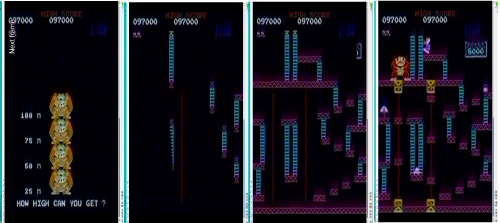
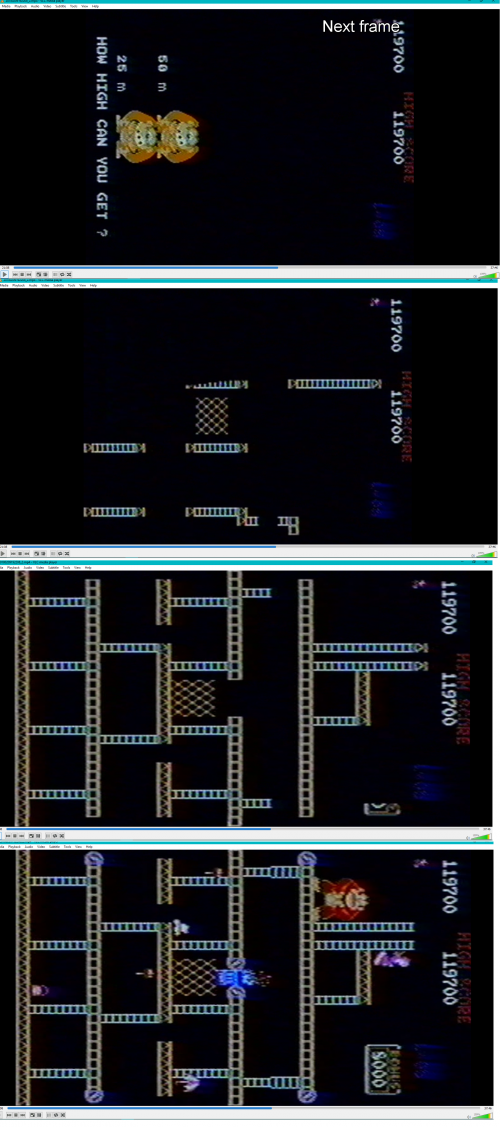
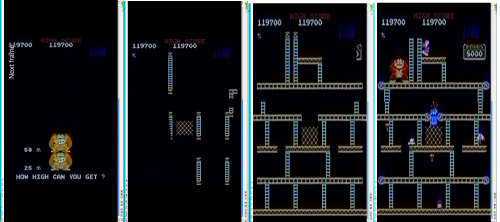
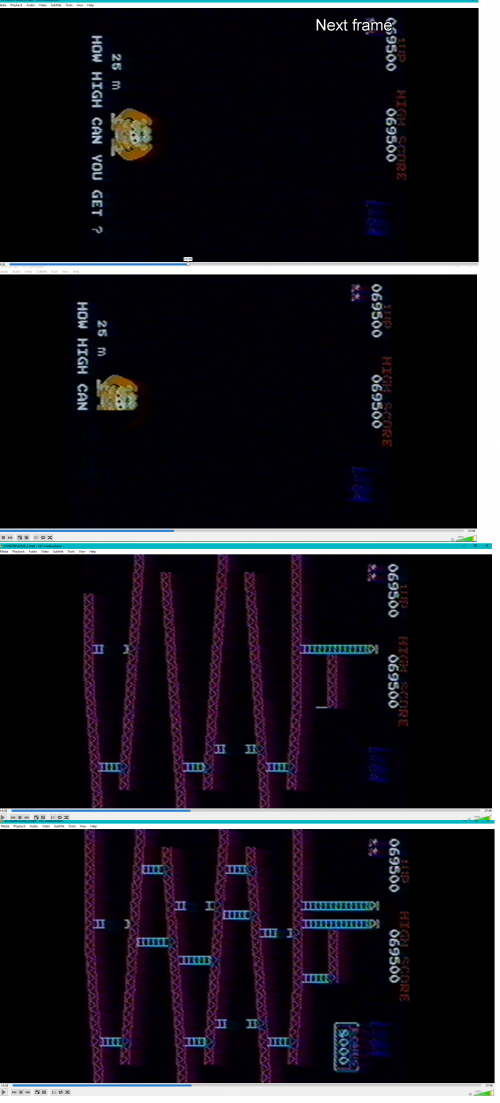
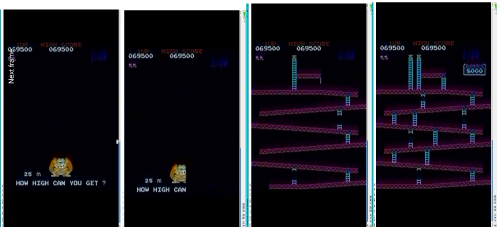
Conclusion of this effort: as best as I'm able to replicate what captured video from an arcade cabinet at the time and with some assumptions as to how the video was being recorded, the results support the assertions.
Capturing directly from MAME hardware is proving significantly more challenging, at least for what I have immediately available to me. My JPAC/ArcadeVGA MAME rig will not output video simultaneously to the arcade monitor and the composite output. It's one or the other. I am going to try outputting to composite from the rig, recording that to VHS, and playing with video being sent to a LCD screen piggy-backed off the VCR. More on that tomorrow.






